
|
The Stamford Historical Society Presents
Pride and Patriotism: Stamford’s Role in World War II
Online Edition
STAMFORD'S WORLD WAR II SERVICE ROLL
A Reconstructed List of Names from Stamford's World War II Service Roll
by Ronald Marcus
Shortly after America's entry into WWII, many counties, districts, cities and towns throughout the country began to erect service rolls. Upon these were placed individual names, as a means of honoring their men and women who were serving in the armed forces. The rolls emerged in many forms and designs, most of which were constructed of wood, though a number were also cast in metal. Unless the roster contained multiple names and was metallic, in many cases the list was affixed to the service roll's main section either in the form of a nameplates or wooden slats affixed to a larger background or painted directly to the roll. Those erected by businesses, fraternal organizations and schools were usually placed in prominent locations within their facilities, while in most instances, municipalities favored setting theirs within a centrally located park. The sizes of these commemorative lists varied, depending primarily on the population of each community or organization. i.
As the war progressed, Stamford erected a rather substantial one, of unique design, in Central [now Veteran's Memorial] Park, opposite the Town Hall. Included were names of men and women from within the entire Town & City who had either enlisted, were drafted, or already serving in the military as of December 7, 1941.
In addition, local residents created neighborhood service rolls at Bull's Head, the East Side, Glenbrook, Springdale, Turn of River and the West Side. ii.
By March 1943 it was reported in the Stamford Advocate that a Service Roll Committee had been formed and approved a final revised design based on a preliminary one prepared under the supervision of Frank Laney at the local State Trade School. An authorized model was to be placed on public view in the newspaper's front window on Atlantic Street. The Committee On Names announced that it obtained lists provided by the Stamford Advocate and Samuel W. Morrell, which would in turn be prepared on file cards by volunteer typists at Harold Short's secretarial school. The two local draft boards cooperated by authorizing the cards to be compared with their records. This process helped to make the list as complete as possible because it was reported that "the Adjutant General's office does not have a complete list of servicemen and women from Stamford."
After a preliminary register of 4,250 names was compiled, it was produced on placards that were displayed in the Town Hall. Once on view, the public was asked to examine them and offer any omissions or corrections to the Selectmen's office; which in turn would send them to a subcommittee consisting of Lt. Col. James H. Wild, of the Connecticut State Guard, Kingsley Gillespie, publisher of the Stamford Advocate and Samuel W. Morrell. It was then announced that bids for painting the names on wooden slats would be sought. Construction of the memorial itself, fabricated of wood, began and was scheduled to be finished by Memorial Day. iii.
Bronze stars cast by a local firm, would be inserted before the names of those who died in the service of their country.
During the week before the service roll's dedication, the "Inscription Committee," consisting of Rev. W. Lee Baxter, Rev. Lawrence J. Flanagan and Rev. Dr. George Stewart, recommended the following inscription to be lettered on "the central panel of the Park Row side of the memorial."
"THESE BE OUR VALIANT SONS AND DAUGHTERS WHO HAVE GONE IN JEOPARDY OF THEIR LIVES – LET NONE WHO REMAIN BE FOUND WANTING" iv.
Stamford's 1943 Memorial Day dedication observances began with a parade consisting of fifty-seven units, including the Stamford City Band, United Spanish War Veterans, Sons of Union Veterans of the Civil War and World War I Veterans. They marched to St. John's Park where a program of traditional ceremonies was held, after which they continued along Main Street to the new Service Roll, which by this time contained 5,555 names.
Mayor Charles E. Moore opened the ceremony by thanking "the committee which helped make the Service Roll possible and the gratitude of all the people of Stamford for the heroic men and women whose names appear on the memorial." The Rev. Lawrence J. Flanagan of St. Mary's R. C. Church delivered the invocation followed by the singing of the National Anthem and the reciting the Pledge of Allegiance. Stamford High School's A Cappella Choir offered two selections, "Great God of Love" and "America's Message," then a recitation of Lincoln's Gettysburg Address and Elias Lieberman's "I Am An American." The principal speaker was the Rev. Dr. George Stewart of the First Presbyterian Church, who stated that America "must have the force to see to it that those responsible [for the war] are brought to justice and it must build for a permanent peace." Then, the Rev. W. Lee Baxter of Union Baptist Church presided at the unveiling of the Service Roll. This was followed by the Baptist Choir who sang 'America' and 'To Thee O Country,' after which the program concluded with a benediction by the Rev. Allen Hackett of the First Congregational Church. At the close of the ceremony the parade, one of the largest in the community's history, continued on to its conclusion. v.
The Service Roll was originally designed to accommodate 8,400 names. However, by the following year their arraignment had to be realigned in order to accommodate an ever-increasing number of names of members of the armed forces from Stamford, which by this time totaled over 7,700 individuals. In doing this it was estimated that would allow for a total of 10,500 names. vi.
It was noted in April of 1944 that a total of fifty one bronze stars were added to the Service Roll's names for those who made the supreme sacrifice. Eventually that number would rise to 233. vii.
"Sixteen million Americans served their country during World War II. Over 10,000 of these came from Stamford. Since the population of the town at that time was about 60,000, this means that roughly one out of six citizens answered his country's call to duty. This figure does not include factory workers, civil defense volunteers or the countless others who contributed to the war effort." viii.
Though sizeable in appearance, the Service Roll's flat roof and wooden construction were not suited for long-term durability of the New England climate. Thus, by the late 1960s it was taken down, primarily because of the combined ravages of time and the elements. The park itself was completely reconfigured in the early 1970's and as Tony Pavia observed, "never again would the names of all those who served their country [from Stamford] be preserved in one place." ix.
Despite this, in 1972 WWII veteran Tony "Old Sarge" Pia proposed that the location's name be changed from Central Park to Veteran's Memorial Park. He submitted his proposal to the Stamford Board of Representatives who unanimously approved the change.
"Stamford has grown to a community of over 100,000 in population. Not having a memorial such as this might lead one to believe that we have lost the faith and purpose of those courageous and valorous men. Their honor and dedication must be perpetuated.
Several years ago, the temporary monument of World War II was torn down. I feel it is for us, here and now, to replace that monument with one that will endure as a lasting memorial, whereby all of Stamford can pause periodically, and be thankful for the deeds of those being honored." x.
Pia then sought designs for a new memorial and the necessary funds for its implementation. Four vertical Barre, Vermont granite monoliths were designed and installed by Geno J. Lupinacci. It was dedicated in November 1977 and inscribed with the names of those from Stamford who gave their lives not only in WWII, but also in Korea and Viet Nam. xi.
In 1985 Thomas J. Kemp, then reference librarian at the Ferguson Library, donated to the Stamford Historical Society, two sets of cards he had acquired. At that time it was believed that they were somehow connected with the endeavor during WWII to erect a local service roll. As it turned out, the smaller 3" x 5" cards are indeed those produced by the volunteer typists at Harold Short's Secretarial School for exactly that purpose. With these in hand, the Historical Society decided to embark on a project of restoring the list of Stamford's members of the armed forces during WWII. This endeavor would not have been possible without the cards as well as photographs of the Stamford Service Roll in the WWII collections at the Connecticut State Library in Hartford, plus photographs of the Bull's Head and West Side Service Rolls.
We are especially grateful to Tony Pavia for the vision to interview a number of Stamford's WWII veterans in preparation for his book An American Town Goes to War., as well as his gracious permission to quote from it. In addition, his thoughts, suggestions and input related to this project were invaluable.
The U. S. Merchant Mariners took casualties at a rate exceeded only by the U. S. Marines. Someone decided that since the pay rate was higher than U. S. Sailors they were somehow not really "veterans" and thus left off the service rolls. Many non-combatants are rightly considered veterans, but a Merchant Mariner who crossed the Atlantic or Pacific, possibly on a vessel carrying fuel or high explosives, under attack by Japanese or Nazi submariners and aircraft was not. In 1988, Mariners finally obtained limited veteran status. We intend to include names of individuals in this service from Stamford as they can be located and verified. xii.
We are thankful to Ann Genovese Longo for her donation of photographs of the West Side Service Roll and Dan Burke for photographing the current Bull's Head Service Roll, located on a plaque, at the junction of High Ridge and Long Ridge Roads.
Those who participated in the tedious but vital task of transcribing names from the cards were: Dan Burke, Daniel Schirmer and Susan Leifer. In matters of correct spellings, and singling out a specific person when there were two or more individuals with the same name, Dan Burke consulted the 1943, 1944, 1945 and 1946 Stamford City Directories.
As in all previous compilations of participants in wars from the American Revolution to date, no list is totally complete or free of error. In the event of inaccuracies or omissions, the public is requested to contact the Stamford Historical Society and substantiate their claims with documentary evidence i.e. honorable discharges, letters, obituaries, newspaper articles, etc.
NOTES
i.. Connecticut State Library website cslib.org Research Guide to World War II Service Records at the Connecticut State Library: Finding Aid RG 12, Series II: World War II Honor Rolls.
ii. Stamford Historical Society website stamfordhistory.org Exhibits; Pride and Patriotism, World War II Stamford Service Roll; section showing Central [now Veteran's Memorial] Park, Bull's Head and West Side service rolls. / Pavia, Tony M. An American town goes to war. Paducah, Kentucky: Turner Publishing Company, 1995, p. 152. Hereafter cited as Pavia. / Stamford Shopper, May 27, 1943 / Stamford Advocate, March 6, 1943
iii. Stamford Advocate, March 6, 1943 / Stamford Advocate, March 9, 1943 / Stamford Advocate, March 23, 1943
iv. Stamford Advocate, May 27, 1943
v. Stamford Advocate, May 27, 1943 / Stamford Advocate, June 1, 1943
vi. Stamford Advocate, April 26, 1944
vii. Pavia, pp. iv-v.
vii. Pavia, p. viii. / Stamford Advocate, April 7, 1944
ix. Pavia, p. 152
x. Stamford Advocate, September 15, 1972
xi. Pavia, p. 152 / Stamford Advocate, September 15, 1972 / Stamford Advocate, October 3, 1972. / Stamford, Connecticut Department of Parks & Natural Resources Public open space park and recreational facilities - Stamford Connecticut, Stamford, Connecticut, 1984, p. 20.
xii. U. S. Merchant Marine website.
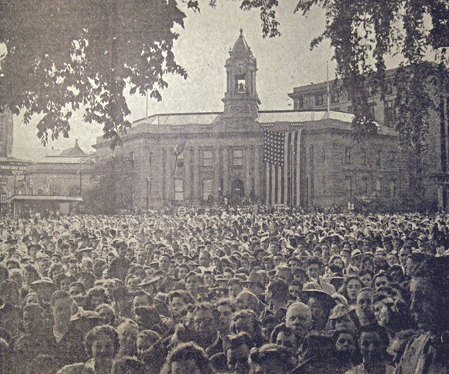
Dedication of the Service Roll on June 1, 1943. The Stamford Advocate.
Stamford Service Rolls
Introduction
Veterans
Stamford Service Rolls
Homefront
Homefront
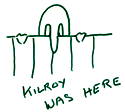 Exhibit Photos
Exhibit Photos
Opening Day
 
|
|
|
|
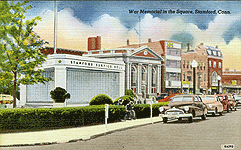
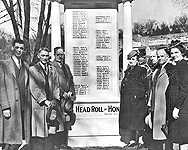
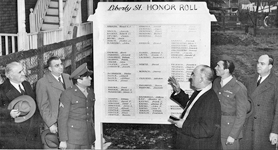
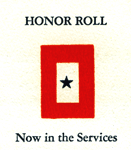
 Exhibit Photos
Exhibit Photos